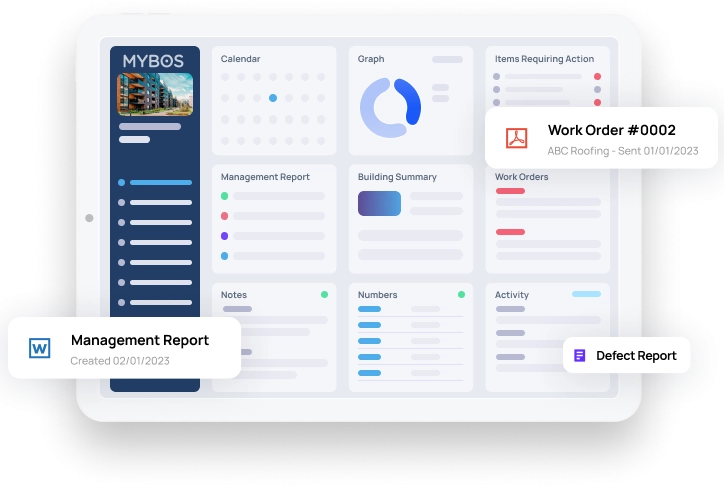
Key Management Made Easy: A Guide for Concierge and Reception Teams
In residential and commercial buildings, concierge and reception teams play a central role in managing building access for residents, visitors, contractors, and staff. A critical yet frequently underestimated part of this responsibility is the handling of physical keys. As buildings grow in size and complexity, the number of keys and access points also increases—making key management a high-risk area if not handled systematically. Without proper controls, the potential for misplaced or misused keys grows significantly, opening the door to unauthorised access, time-consuming tracking efforts, and avoidable disruptions to daily operations.
An article by the FacilitiesNet mentions that mid‑ to large‑scale facilities can often face key management headaches, and recommends implementing key management systems that provide secure, centralised storage, automatic sign-in/sign‑out tracking, and audit trails. These systems restrict access to authorised personnel only, ensure accountability, and reduce risks associated with lost or misused keys.
Whether it’s issuing keys for apartment units, shared amenities, maintenance areas, or temporary access for contractors, the ability to monitor, log, and retrieve keys quickly can directly impact resident satisfaction and building security.
In this article, we explore practical solutions and tips designed to simplify key management, reduce risk, and improve operational control for front-of-house teams.
Key Responsibilities for Concierge Teams
The role of the concierge is expanding beyond meet-and-greet duties. As the frontline of tenant engagement and visitor screening, concierge teams must also master reception key tracking.
Key responsibilities include:
- Monitoring sign-in/out of all keys
- Verifying ID of contractors or guests
- Following building key policies strictly
- Logging lost or unreturned keys immediately
Reception teams are increasingly managing broader responsibilities, FMJ highlighted that it is essential in taking on more security-critical roles, including key control and audit tasks, to ensure safe, compliant operations post-pandemic. Having access to a user-friendly dashboard that logs activity in real time can drastically improve both efficiency and security. This is especially important for buildings managing short-term rentals, maintenance contractors, and multiple strata lots.
Key Management Systems: Digital vs Manual
Key management systems generally fall into two categories: manual and digital. Each comes with its own advantages and limitations, depending on the size and complexity of the building, the volume of daily key usage, and the level of security required.
Manual systems are still widely used in smaller buildings or older setups, typically relying on physical ledgers or sign-in books to track key movements. While these methods may be low-cost and straightforward to implement, they carry a high risk of human error, offer no real-time oversight, and require significant staff time to maintain accuracy and accountability.
Digital key management systems, on the other hand, offer a more scalable and secure solution for modern buildings. These systems use electronic logging with automatic time-stamping, creating a clear audit trail of who accessed which keys and when. Most digital platforms can integrate with existing building access control systems, allowing for centralised oversight and real-time monitoring. Additional features such as automated alerts for overdue key returns, role-based access permissions, and reporting tools help front desk teams manage keys more efficiently and with less risk.
Compared to manual systems, digital key management significantly reduces administrative burden while enhancing building security and operational control. Here’s how the two systems compare:
| Manual Key Management | Physical ledger or sign-in book High risk of human error No automatic tracking or alerts Low setup cost, but time-consuming to manage Limited oversight and scalability |
| Digital Key Management | Electronic logs with time-stamped audit trails Integration with building access control systems Automated alerts for overdue or unreturned keys Role-based access control for increased accountability Scalable, secure, and less labour-intensive |
Many modern systems integrate electronic key log systems with broader building software like MYBOS, providing a centralised, cloud-based solution. If you’re exploring upgrade options, see 7 Steps for Creating a Secure Building Key Register System.
Essential Features to Look for in Key Management Software
If you’re considering upgrading your key control solutions, here’s what to look for:
- Time-stamped logs: Tracks who took what, and when
- User permissions: Restrict access based on user roles
- Automated alerts: Receive notifications for overdue returns
- Digital dashboards: Easily search and monitor key history
- Audit-ready exports: Helpful during security incidents or building audits
Cushman & Wakefield emphasises in their playbook that sophisticated facilities management platforms combine key and credential tracking, visitor screening, and analytics into one centralized system. These integrated solutions provide real-time insight into who holds each key, flags missing or overdue items, and help enforce access protocols consistently, closing security gaps and ensuring accountability at the front desk.
Many of these are included in building key management tools integrated with MYBOS and similar platforms. Learn more in The Evolution of Building Access Systems: From Keycards to Smart Tech.
Best Building Access Control Practices for Concierge and Reception Teams
Enhancing access control for concierge teams doesn’t require an entire security overhaul. Instead, it comes down to smarter workflows and tech tools:
- Provide training on key policies and system usage
- Implement tiered permissions for staff and contractors
- Create quick-reference guides for daily operations
KPMG notes that centralised and automated access systems are increasingly being adopted across building operations. These systems enable role-based permissions, real-time access logs, and automated expiration of credentials. When applied to front-desk teams, they streamline key distribution, reinforce permission protocols, and ensure visibility over who accessed which area and when.
Supporting teams with the right tools can improve trust, reduce stress, and minimise operational errors.
Centralising Key and Visitor Management
Concierge teams can streamline their work by combining visitor key management and check-in processes. A unified solution can:
- Track key custody along with visitor identity
- Log entry/exit timestamps
- Capture digital signatures or ID scans
This not only enhances security but also gives managers a clear audit trail.
For more ideas on how to improve tracking, check out Key Data Every Facility Manager Should Track.
Simplifying Your Key Management: Key Takeaways for Smarter Access Control
Concierge and reception teams play a vital role in maintaining secure and efficient building operations, and effective key management is a fundamental part of that responsibility. With growing volumes of residents, visitors, and contractors moving through buildings daily, the need for a structured and reliable system for handling physical keys has never been greater.
Whether managing access to apartments, plant rooms, communal areas, or restricted zones, having a clearly defined process backed by the right tools helps reduce the risk of misplaced keys, unauthorised entry, and administrative errors. It also frees up staff time, allowing teams to focus more on resident service and operational support. As security expectations rise across Australia’s property sector, now is the time to review your building’s key control solutions.
Looking to simplify your key and building access tracking? Book a demo with MYBOS to see how we can help centralise your key management, visitor logs, and access control in one easy-to-use platform.




